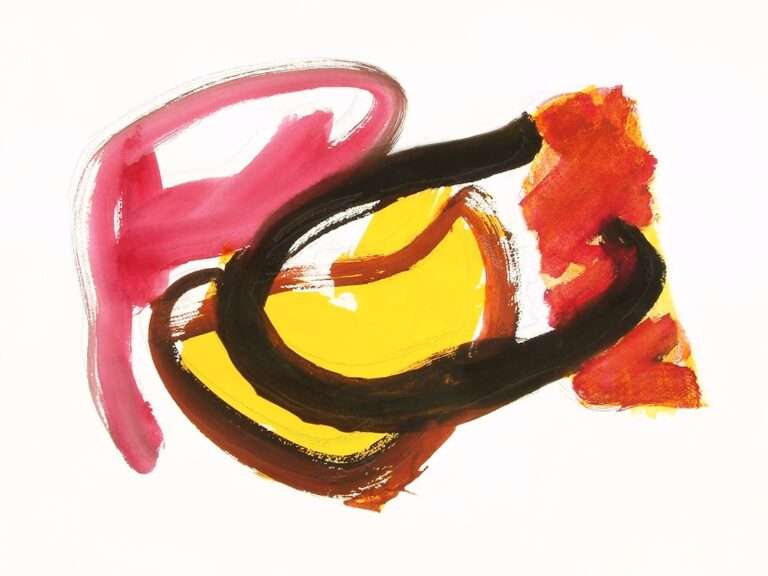What does the Greek key pattern symbolize?

The Greek Key pattern, also known as the meander or key fret, is a decorative motif that has been utilized in art, architecture, and design for millennia. It is characterized by a continuous line forming a series of right angles, resulting in a geometric and symmetrical design. This pattern is commonly found in borders, friezes, and other ornamental elements, and its enduring appeal has made it a popular choice for both traditional and contemporary designs.
While the Greek Key pattern is named for its association with ancient Greek art and architecture, it has been employed by various cultures throughout history. Its simple yet striking design has rendered it a versatile and long-lasting motif, continuing to be used in a wide range of applications, including textiles, jewelry, furniture, and interior design. This article will examine the historical origins, symbolism, cultural significance, and modern interpretations of the Greek Key pattern, highlighting its lasting appeal and timeless aesthetic qualities.
Key Takeaways
- The Greek Key pattern, also known as the meander or key fret, is a decorative motif featuring a continuous line that forms a series of right angles.
- The Greek Key pattern has its origins in ancient Greece, where it was used in architecture, pottery, and jewelry, and has since been adopted by many other cultures.
- The Greek Key pattern is rich in symbolism, representing infinity, unity, and the eternal flow of life.
- The Greek Key pattern has been widely used in art and architecture, from ancient Greek temples to modern buildings and interior design.
- The Greek Key pattern continues to be a popular and timeless design element, with modern interpretations and applications in fashion, home decor, and graphic design.
Historical Origins of the Greek Key Pattern
The Origins of the Greek Key Pattern
The motif is believed to have been inspired by the winding path of the Meander River in present-day Turkey, a vital trade route in ancient times. This inspiration led to the pattern’s initial use in pottery, which later evolved into a popular decorative element in Greek architecture. It was often used to adorn friezes, columns, and other architectural elements, adding an extra layer of beauty and sophistication to Greek buildings.
The Spread of the Greek Key Pattern
The Greek Key pattern also made its way into Roman art and architecture, where it was used in a similar fashion to adorn buildings, mosaics, and jewelry. As the Roman Empire expanded, the motif continued to spread throughout the Byzantine Empire and the Islamic world. Here, it was incorporated into intricate geometric designs in textiles, ceramics, and architecture, showcasing its versatility and appeal.
Timeless Beauty and Enduring Appeal
The widespread use of the Greek Key pattern throughout the ancient world is a testament to its enduring appeal and timeless beauty. From its humble beginnings in ancient Greece to its adoption in various cultures and civilizations, the Greek Key pattern has remained a beloved and iconic design element, continuing to inspire artists, architects, and designers to this day.
Symbolism and Meaning of the Greek Key Pattern

The Greek Key pattern is rich in symbolism and meaning, with its continuous line representing the eternal flow of life and the interconnectedness of all things. The pattern’s repeated right angles are thought to symbolize infinity and the cyclical nature of existence, while its geometric precision reflects the order and harmony of the natural world. In ancient Greece, the motif was often associated with the concept of unity and continuity, and it was used to symbolize the eternal flow of time and the interconnectedness of all things.
In addition to its symbolic meaning, the Greek Key pattern has also been associated with various mythological and religious themes. In ancient Greece, the motif was often used to adorn temples and sacred spaces, where it was believed to offer protection and ward off evil spirits. The pattern’s labyrinthine design has also been linked to the myth of Theseus and the Minotaur, where it symbolizes the hero’s journey through the maze in search of his destiny.
The rich symbolism and meaning of the Greek Key pattern have contributed to its enduring popularity and widespread use throughout history.
Use of the Greek Key Pattern in Art and Architecture
The Greek Key pattern has been used in art and architecture for thousands of years, where it has been employed to adorn a wide range of decorative elements. In ancient Greece, the motif was used to embellish pottery, jewelry, and architectural friezes, where its geometric precision and symmetrical design added a sense of order and harmony to the decorative arts. The pattern’s timeless appeal made it a popular choice for adorning temples, palaces, and public buildings, where it was used to create a sense of grandeur and elegance.
The Greek Key pattern continued to be used in Roman art and architecture, where it was employed to adorn buildings, mosaics, and decorative objects. The motif’s enduring popularity can be seen in its widespread use throughout the Byzantine Empire and the Islamic world, where it was incorporated into textiles, ceramics, and architectural designs. The pattern’s versatility and timeless beauty have made it a popular choice for adorning a wide range of decorative arts, from furniture and textiles to jewelry and interior design.
Cultural Significance of the Greek Key Pattern
The Greek Key pattern holds significant cultural importance due to its association with ancient Greek art and architecture. In ancient Greece, the motif was used to adorn temples, palaces, and public buildings, where it was employed to create a sense of grandeur and elegance. The pattern’s timeless appeal made it a popular choice for adorning pottery, jewelry, and textiles, where its geometric precision added a sense of order and harmony to the decorative arts.
The Greek Key pattern also holds cultural significance in Roman art and architecture, where it was used to adorn buildings, mosaics, and decorative objects. The motif’s enduring popularity can be seen in its widespread use throughout the Byzantine Empire and the Islamic world, where it was incorporated into textiles, ceramics, and architectural designs. The pattern’s versatility and timeless beauty have made it a popular choice for adorning a wide range of decorative arts, from furniture and textiles to jewelry and interior design.
Modern Interpretations and Applications of the Greek Key Pattern

Interior Design Applications
The pattern’s geometric precision adds a sense of order and harmony to interior spaces, making it a popular choice for both traditional and contemporary designs. It is often used to adorn textiles, rugs, wallpaper, and furniture, where its striking design adds a touch of elegance and sophistication to any space.
Fashion and Jewelry Design
The Greek Key pattern’s enduring popularity is also evident in its widespread use in fashion and jewelry design, where it is employed to create bold and eye-catching designs. Its timeless beauty adds a touch of sophistication to any ensemble, making it a popular choice for adorning clothing, accessories, and jewelry.
Graphic Design and Branding
In addition to its use in fashion and interior design, the Greek Key pattern is also employed in graphic design and branding, where its striking design adds a sense of elegance and sophistication to logos, packaging, and promotional materials.
The Timeless Appeal of the Greek Key Pattern
In conclusion, the Greek Key pattern is a timeless motif that has been used in art, architecture, and design for thousands of years. Its rich symbolism, historical significance, and enduring beauty have made it a popular choice for adorning a wide range of decorative elements. From ancient Greece to modern times, the Greek Key pattern continues to captivate with its geometric precision and symmetrical design.
Its versatility has allowed it to transcend time and culture, making it a beloved motif that continues to inspire artists, designers, and architects around the world. Whether adorning textiles, jewelry, or interior spaces, the Greek Key pattern remains a symbol of elegance and sophistication that will continue to stand the test of time.
FAQs
What is the Greek key pattern?
The Greek key pattern, also known as the meander pattern, is a decorative motif that consists of a continuous line, shaped into a repeated motif resembling the twisting and turning of a river.
What does the Greek key pattern symbolize?
The Greek key pattern is often associated with the concept of infinity and unity, as the continuous and unbroken line represents the eternal flow of life. It is also seen as a symbol of eternal life and the eternal flow of things.
Where is the Greek key pattern commonly found?
The Greek key pattern can be found in various forms of art, architecture, and design, including ancient Greek pottery, Roman mosaics, and neoclassical buildings. It is also commonly used in modern interior design, fashion, and jewelry.





